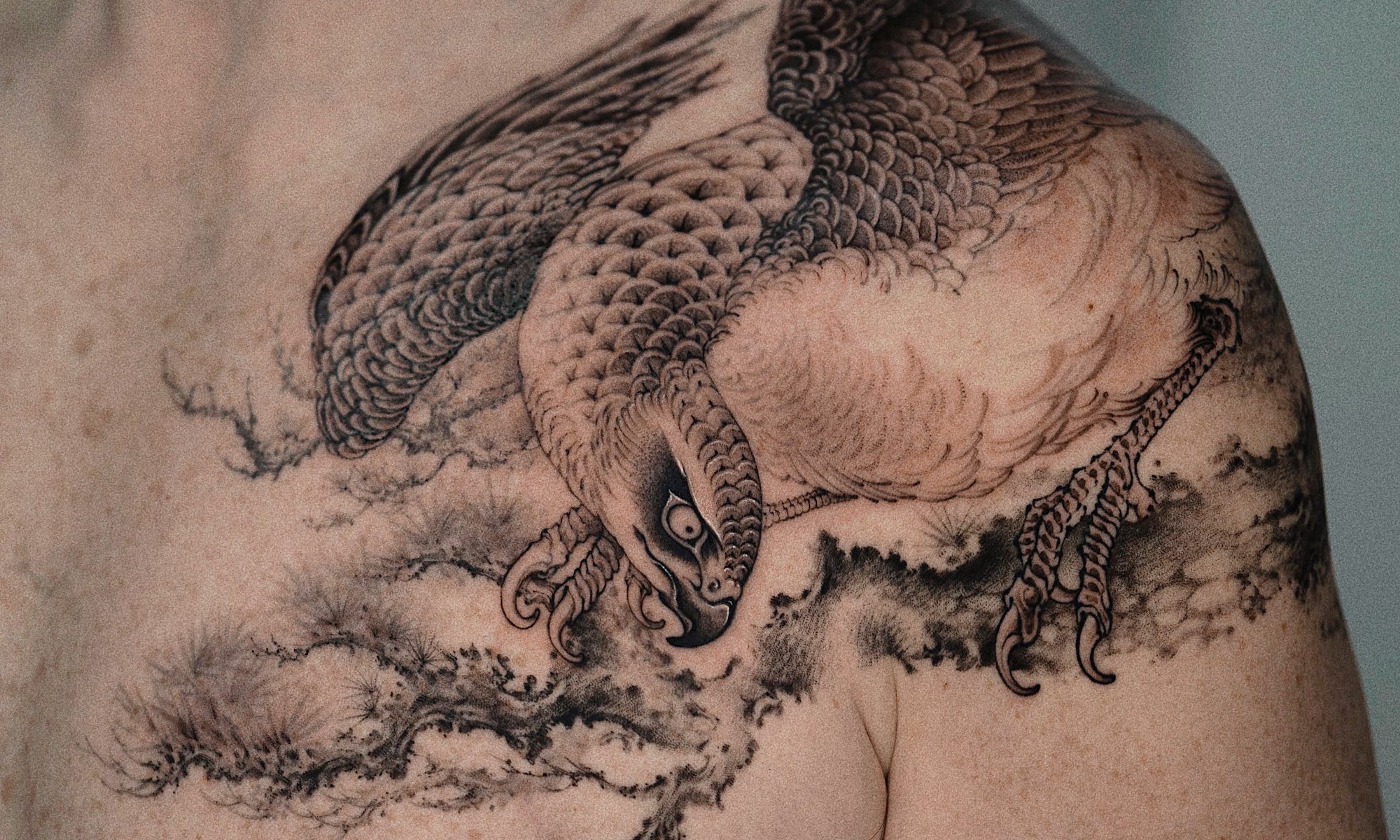Tattoo artist Kim Hoon (@uncogrim) runs Frame Seoul tattoo studio in South Korea. We chatted to the tattooer about their incredible blackwork tattoos and how they use the body to influence their designs…
When did you first fall in love with tattoos?
From a young age, my biggest hobby has always been drawing. I’ve spent most of my time drawing. I enjoy creating forms and adding detail with pens, pencils and using different colours. Naturally, I started seeing designs meant for tattoos and found them incredibly appealing.
Growing up seeing tattoos on people and learning about the various tattoo genres made me want to get a tattoo of my own. This desire evolved into wanting to learn and create tattoos myself. Drawing something that remains on someone’s body for life is more special and everlasting than drawing on a canvas.
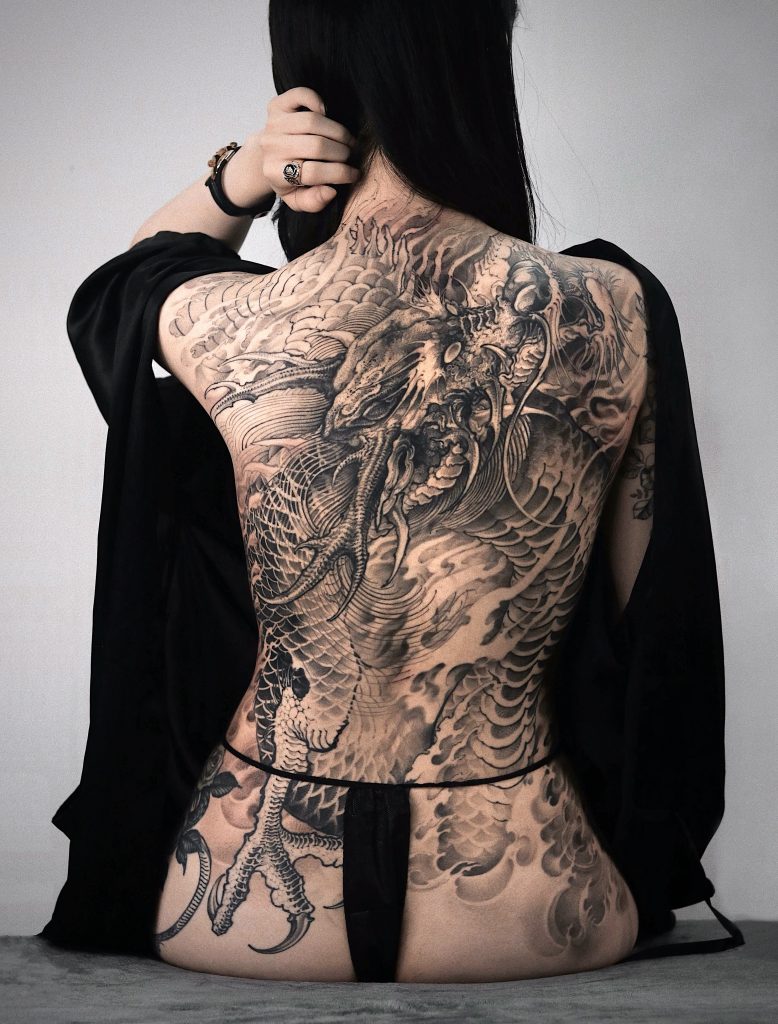
What was the first tattoo you got? How do you feel about it?
My first tattoo was a four-line piece of lettering on my chest. It’s an Indian proverb that means “live without regrets.” I got it in 2012, and at that time, social media wasn’t as developed as it is now, so it was hard to find out about tattoos. I found information about tattoos through personal blogs, and lettering felt like the easiest type of tattoo to get.
I didn’t know how much it would cost, but I remember it was calculated based on the price per centimetre. Sometimes tattoo artists say that you might regret getting lettering tattoos, but I don’t really regret it. It reminds me of what I was thinking back then, and it’s a fun memory. I was so fascinated by having a tattoo on my body that I would look in the mirror every day and read each letter.
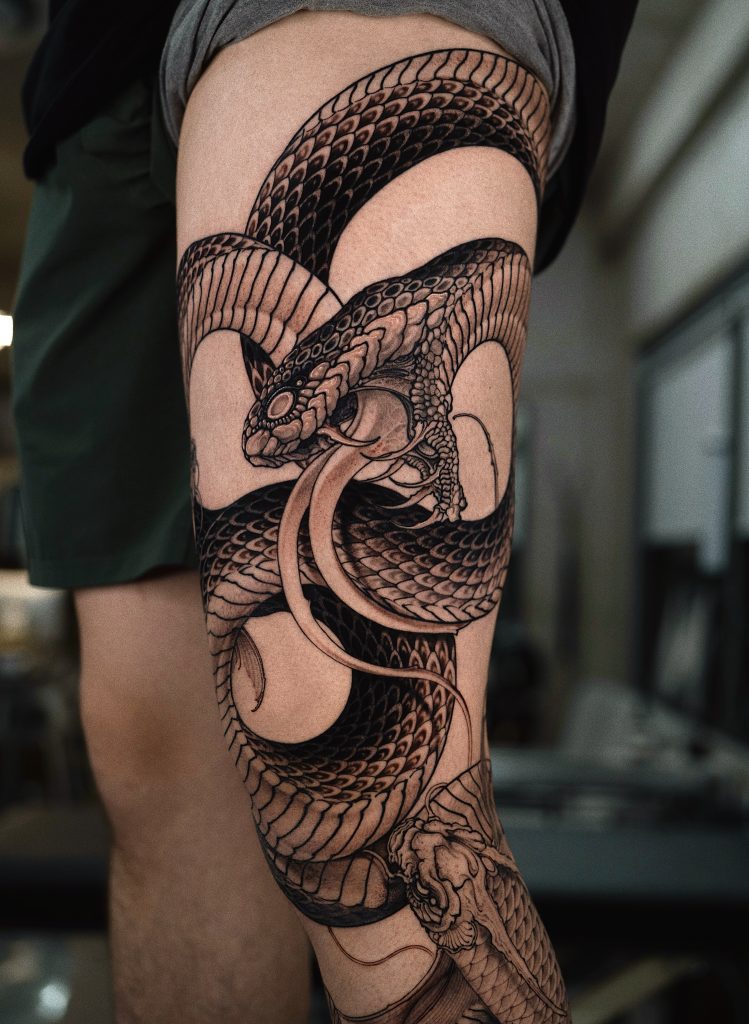
How long have you been tattooing for?
I started in 2017. Unlike drawing on paper, there was immense pressure not to make mistakes. When I first began, the stress was so intense that I couldn’t sleep properly two days before a scheduled appointment. After doing a tattoo, I’d often feel guilty about my shortcomings and sometimes, driven by a sense of inadequacy and inferiority, I would stay up all night drawing. These experiences have shaped who I am today.
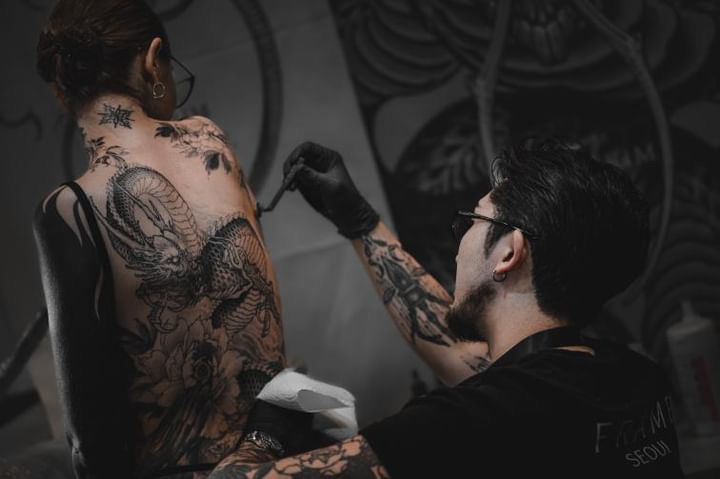
How did you develop your style to what it is today?
When I first started tattooing, I preferred creating smaller designs compared to what I do now. I used to draw mostly on A4 paper or sketchbooks rather than large canvases, which meant I made similar-sized designs for tattoos.
However, after doing a large tattoo, I found it appealing to consider the body’s lines and muscles. I liked designing something that used the entire body rather than just a part of it. This gradually changed my style.
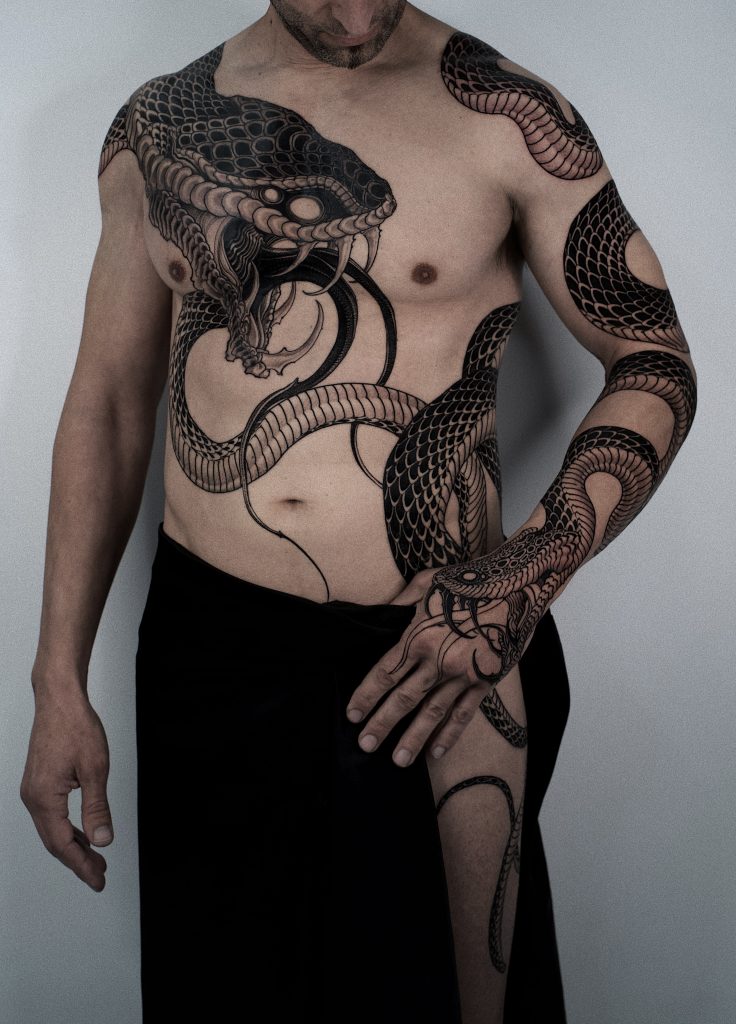
Your style is so unique, your tattoos are so dark and striking, what inspires you?
I draw inspiration from countless sources. Sometimes it’s movies, sometimes music, sometimes the surrounding scenery, and even the clothes someone is wearing. These days, I mainly focus on the flow of clothes or the body.
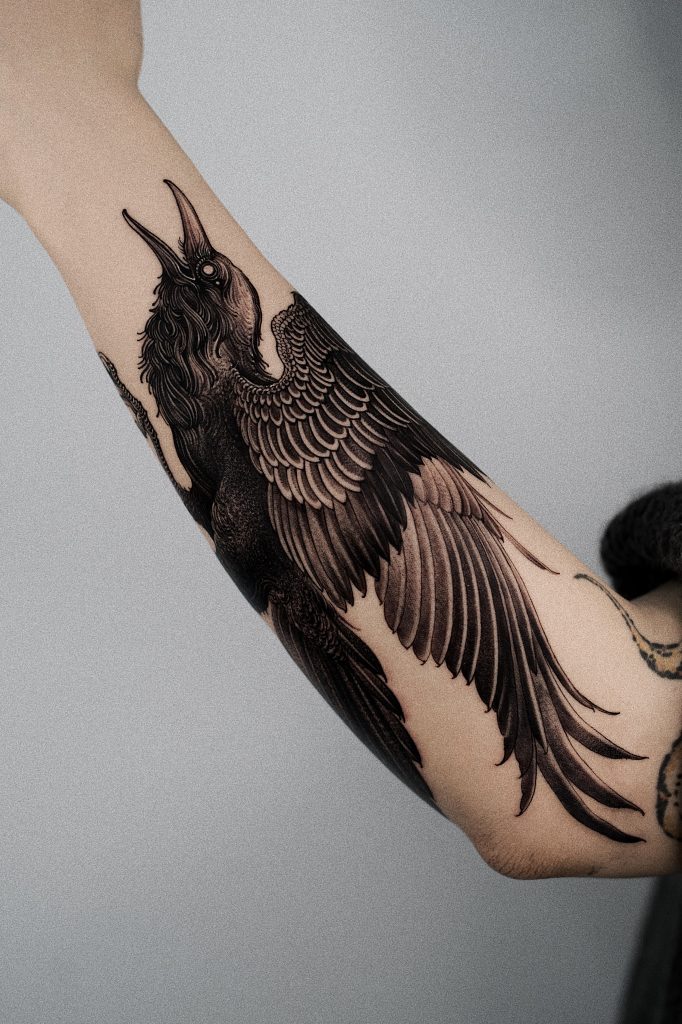
Do you have any themes in your work or things you love to tattoo?
Many people like my snake and dragon designs. Snakes and dragons are fluid and can flow with the limbs. They emphasise the body’s lines to look sexier or more intense, and they can also cover up any perceived weaknesses or complexities. I also like using elements like flowers, wind and clouds. Recently, I’ve been trying to incorporate more Korean elements into my designs.
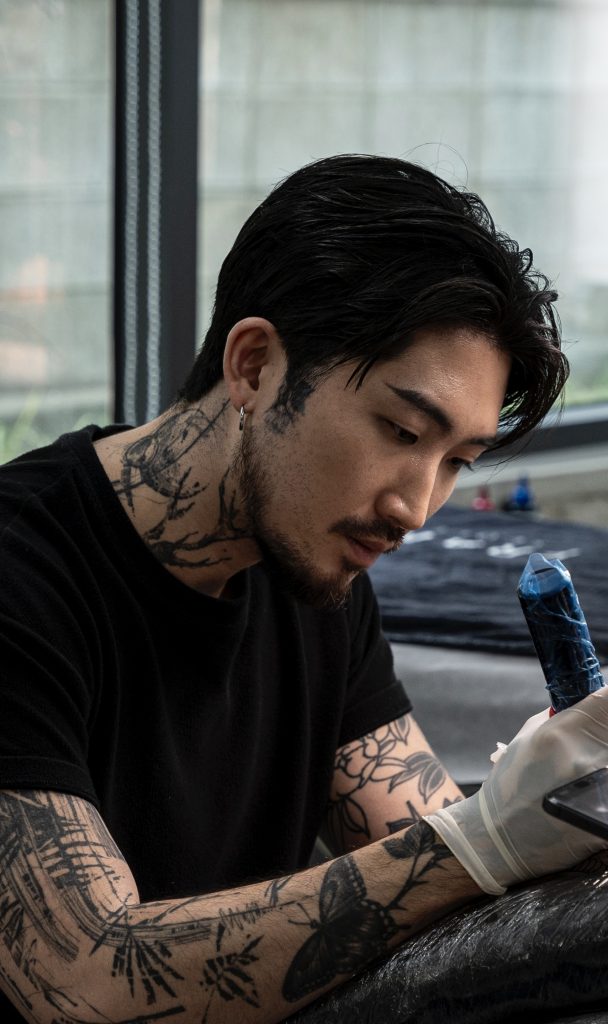
Which artists do you admire and why?
There are so many, but to name a few, @fibs_, @gakkinx and @filouino. They are all artists who understand the body well and design accordingly.
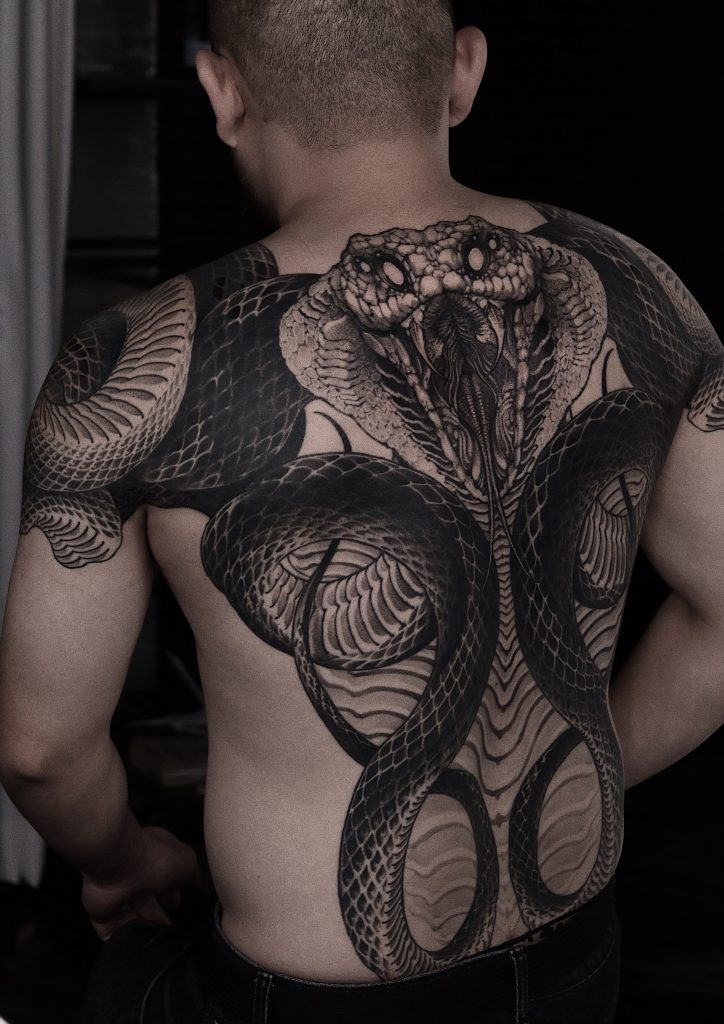
How do you usually work with customers? Do you mostly do custom work or do you create flash too?
I mainly do custom work. Most of my clients are from overseas, so I conduct thorough consultations via email before they travel to Korea. If the design is large, they’ll need to stay longer, so we spend a lot of time coordinating schedules and designs. I also ask for various photos of their bodies in advance to understand their features and vibe before proceeding with the design.
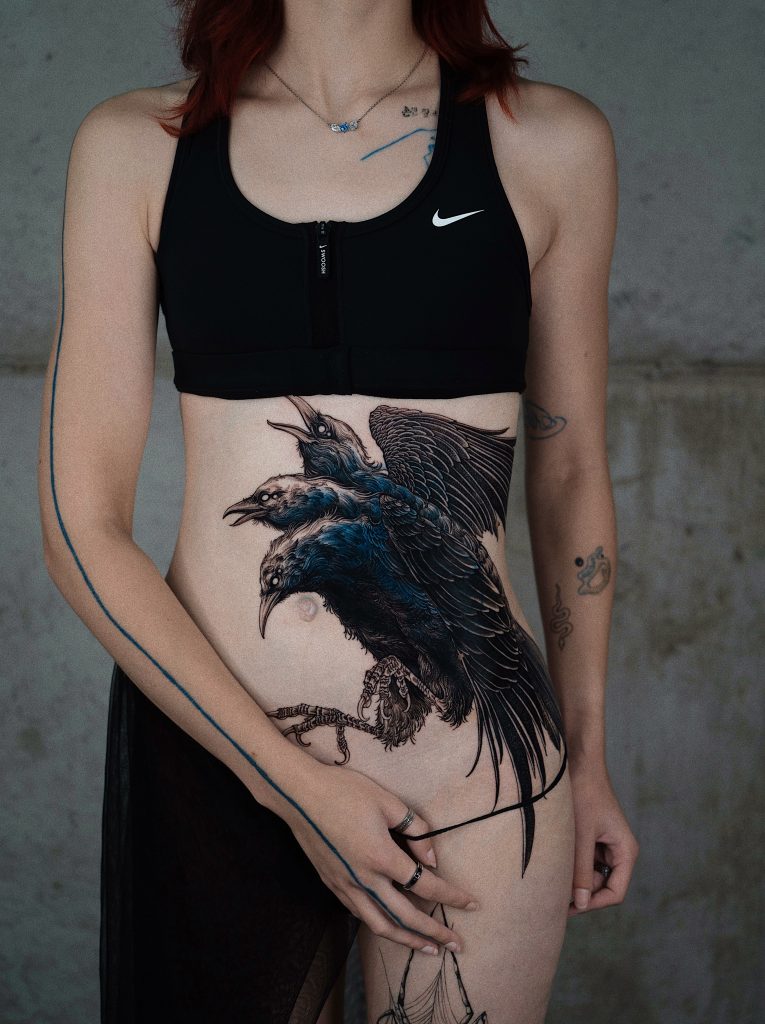
Do you draw your designs straight on to the body?
Sometimes, I draw directly on the body. To minimise errors, I meet with clients beforehand and draw directly on their bodies before preparing a design digitally. I sketch the positions and flow that suit their body features, checking in the mirror and moving to see if anything looks awkward. Based on this, I prepare a design digitally again. When starting the work, I use both the digital preparations and my hand drawings.
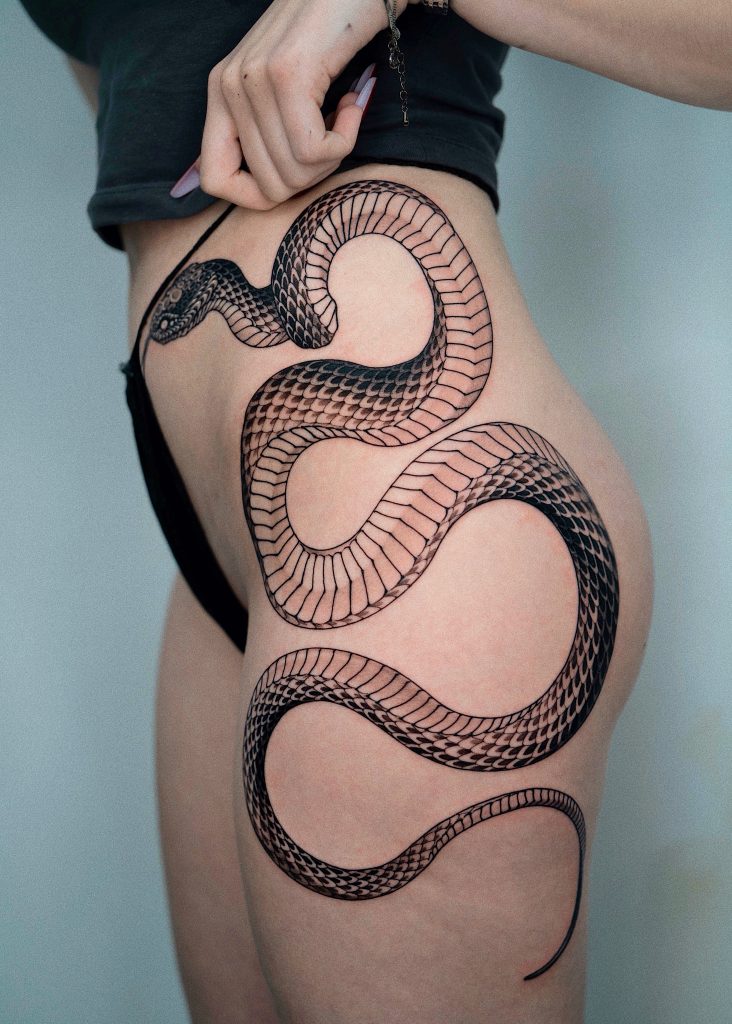
Are you planning any guest spots? If so where and how do we book in?
I am preparing for the Gods Of Ink convention in Frankfurt in March 2025. I have already announced it on Instagram and I am taking reservations via email.
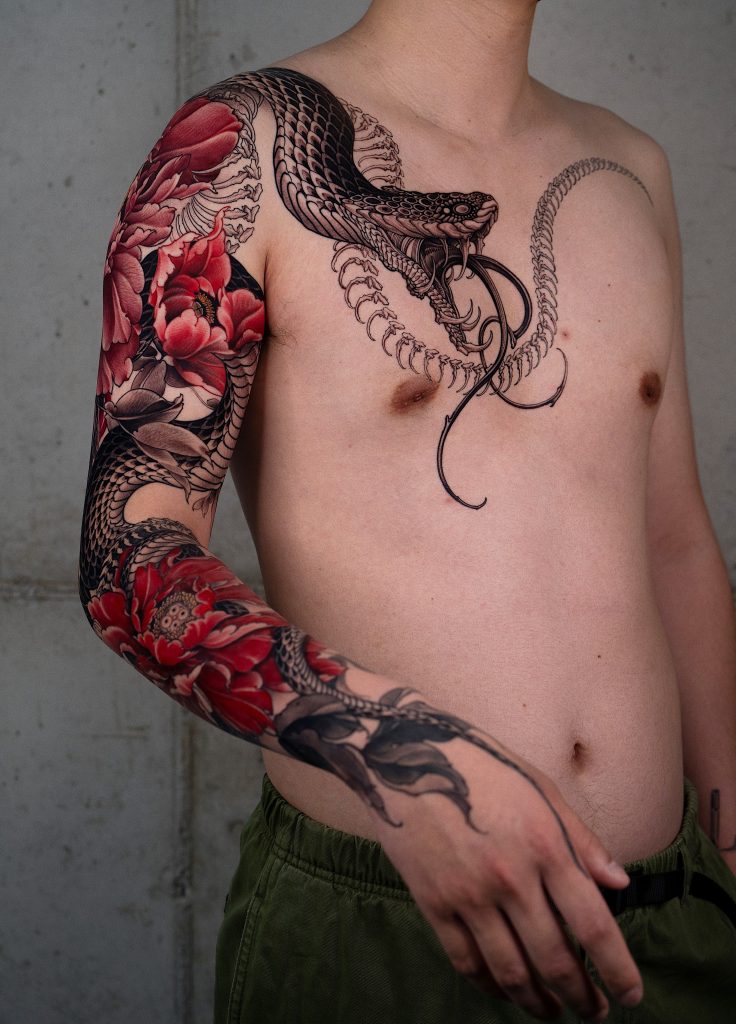
What’s the tattoo scene like in Korea these days? We’d love to visit, do you tattoo tourists?
You are always welcome. Just make a reservation via email in advance. Korea has many highly skilled artists that are recognised worldwide. However, ironically, Korea is in a unique situation. It is the only country where tattooing is illegal, and although there is a job code for tattooists issued by the government, they are not legally protected. Many are striving to have tattooing recognised as a legitimate profession in Korea.
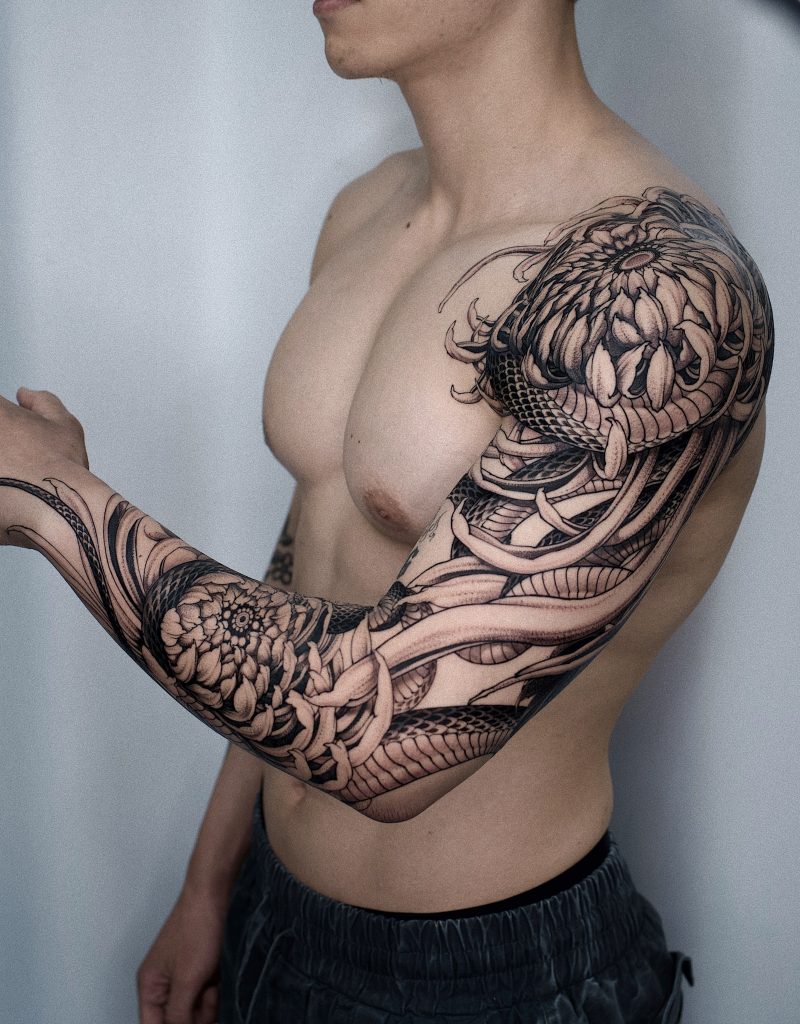
What are your hopes for the future?
That’s a great and difficult question. For some, tattoos are a beautiful art form, but for others, they can feel threatening, scary, or even repulsive. Personally, I hope tattoos will be seen more positively as a form of art, and I wish that both artists and clients ensure their tattoos do not evoke negative feelings in others.
My personal goal is to gain experience and network through various tattoo conventions worldwide. I hope to travel to different tattoo studios in different cities too. I want to see and experience how other tattooers’ lives and styles differ from those at my studio in Korea.
Follow Kim Hoon on Instagram for more outstanding blackwork tattoos and travel updates.
We’re always talking to amazing tattoo artists, check out our latest interviews.
